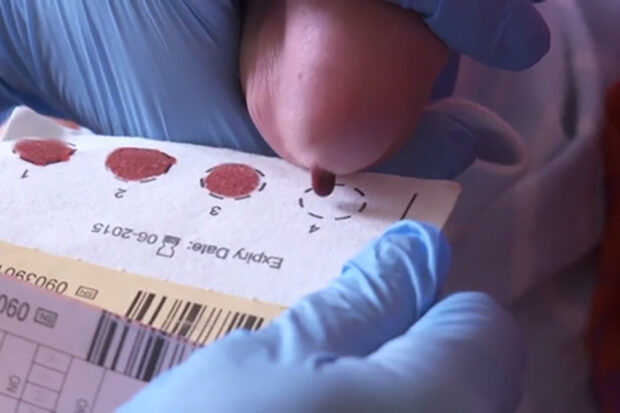
The UK National Screening Committee (UK NSC) is today opening a consultation on its proposed recommendation to continue the in-service evaluation (ISE) of newborn screening for severe combined immunodeficiency (SCID) in NHS services.
The ISE was launched in September 2021 to answer some important questions about the impact and effectiveness of screening. The latest evidence on screening for SCID, including NHS England’s (NHSE’s) findings from the ISE during the 30-month evaluation period up to March 2024, were presented to UK NSC members at their June 2025 meeting.
The committee supported a recommendation to extend the ISE for SCID while the ISE of newborn screening for spinal muscular atrophy (SMA) takes place.
We are asking stakeholder organisations and individuals, including members of the public, to provide feedback on the consultation evidence documents and the recommendation.
To take part in the consultation, download the consultation documents by clicking on the grey ‘View documents’ button on the UK NSC’s SCID recommendation page. Then submit your response by clicking on the green ‘Submit comments’ button.
The deadline for responses is 11.59pm on 27 October.
The 4 new evidence documents can also be downloaded from the following links:
- UK NSC covernote that includes the recommendation to extend the ISE
- 2025 evidence review of newborn screening for SCID
- NHS England report on the findings of the ISE
- 2025 Sheffield Centre for Health and Related Research (SCHARR) modelling study on the cost-effectiveness of screening for SCID in the UK
The NHSE report can only be properly interpreted by also reading, at a minimum, the executive summary of the SCHARR cost-effectiveness report.
Background
SCID is a group of rare inherited disorders that result in low numbers of T-cell lymphocytes (a type of white blood cell) and that prevents the body from fighting infection properly. There are usually no symptoms when an affected baby is born. The condition can develop very quickly and almost always results in death in the first year unless the baby receives a bone marrow transplant to repair their damaged immune system.
Screening for SCID, as part of the newborn blood spot (NBS) screening programme, looks for babies with low numbers of white blood cells as a sign that they may have the condition. Early detection means steps can be taken to avoid the risk of infections, improving the success of transplant treatment.
Following a review in 2017, the UK NSC recommended there needed to be an ISE because the evidence was uncertain in some areas. For example:
- low numbers of white cells can have many causes other than SCID
- the accuracy and ease of use of the test in high volumes was not known
- there was uncertainty over how all babies with low numbers of white blood cells might be followed up and cared for if needed
Answers to these questions and many others could only be found by evaluating the screening of large numbers of babies for SCID through an ISE in NHS services.
In addition, SCHARR was commissioned to conduct a modelling study assess the cost-effectiveness of screening for the condition in the UK.
Updated evidence
Well over 1 million babies have been screened for SCID since the launch of the ISE. NHSE’s report on the 30-month ISE evaluation period found that screening detected 10 babies with the condition who would otherwise have gone undetected until infections developed, thus preventing serious illness.
However, it also detected hundreds of babies with low white cell numbers who were subsequently found to be well. Babies in this group derived no benefit from screening. and many families were put through the stress of being told their baby may have a life-threatening disorder, when this turned out not to be true.
Work to improve the test remains ongoing.
The 2025 SCHARR cost-effectiveness study estimates that screening for SCID does not meet accepted cost effectiveness thresholds as a standalone addition to the NBS screening programme. However, it also estimates that it would become cost effective if screening for spinal muscular atrophy (SMA) was introduced or trialled at the same time, and using the same testing system.
UK NSC June 2025 minutes
Other topics considered at the June 2025 meeting of the UK NSC included non-invasive prenatal testing (NIPT) and screening for SMA.
See UK NSC meeting June 2025 for the full draft minutes from the meeting.
Keep up to date
The UK NSC blog provides up to date news from the UK NSC. You can register to receive updates direct to your inbox, so there is no need to keep checking for new articles. If you have any questions about this blog article, or about the work of the UK NSC, please email uknsc@dhsc.gov.uk.